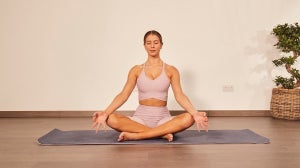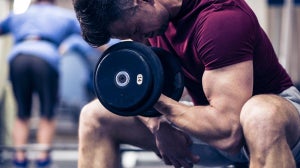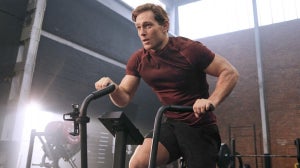
I love Back Day. I spend at least one session per week focusing on as many of the different aspects of this area; as diligent on each as I am on my pectorals or my deltoids.
However, there are lots of variable aspects to back training. We are dealing with different tissues, different angles and different movements. This makes the process less simple than training isolated muscle groups, such as your biceps.
This article will identify the ways and means to plan a back session to optimise full muscular recruitment, giving you a definitive breakdown of the Ultimate Back Exercises!
Back Training
Back anatomy is complex. There are approximately 17 muscles in the back which are grouped in different packages of muscles. Upper back/ neck
Trapezius (superior, intermediate and inferior regions) Levator Scapulae Splenius muscles (capitis, cervicis)
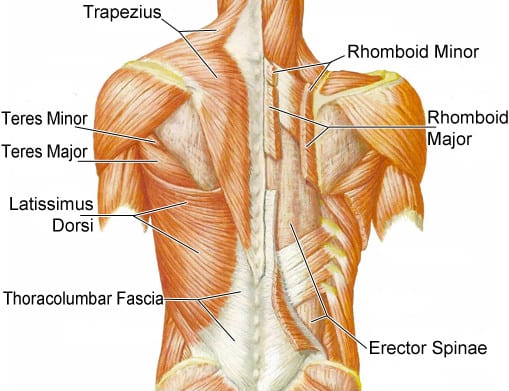
Latissimus Dorsi Quadratus lumborum Rhomboids (minor/ major) Erector spinae muscles (spinalis, longissimus, iliocostalis)
Smaller/ Deeper MusclesRespiratory muscles (levatores, serratus posterior-superior, serratus posterior-inferior) Transversospinalis muscles (paraspinal muscles- semispinalis, multifidus, rotatores)
There is also the large non-contractile thoracolumbar fascia which covers the central and lower regions of the spine and acts as an attachment point for lots of muscles.
Ultimately, what this means is that isolation of specific muscles is more difficult than in the limbs. A better way to think about back training is to consider the various 3 dimensional (multiplanar) movements that can occur in this area.
Planes Of Motion
The planes of motion are:
Sagittal Plane passes from front to back (divides the body into left and right). Movements in this plane are flexion and extension.
Frontal Plane passes vertically from left to right (divides the body into front and back). Movements in this plane are side flexion (side bends) or limb movements such as abduction (taking away) or adduction (bringing closer).
Transverse Plane passes horizontally from left to right (divides the body into top and bottom). Movements in this plane are rotation (twisting).
As we are unable to isolate a specific muscle, it is important to consider which exercises maximise recruitment of a vast expanse of muscles. For this we examine electromyography (EMG) readings, which measures the amount of electrical activity in muscle cells.
Exercise #1: The Deadlift
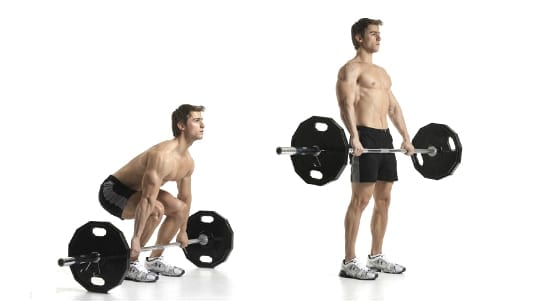
Plane: Sagittal
Movement: Anti-extension
Muscle action: Isometric
Example of muscles used: Erector spinae
The Granddaddy of all back exercises and an essential component to a back exercise programme, the deadlift is a proven winner for erector spinae activation.
Using 80% 1 repetition maximum (1RM) it has been shown to cause greater EMG activation of the erector spinae muscles than calisthenic exercises (such as the superman or side bridge) particularly in the upper portions of this muscle (1).
Free weight exercises such as a barbell deadlift have also been shown to be the best option for deep muscle recruitment (e.g. multifidus) (2).
This is a strength-building, powerhouse of an exercise and assists the back to withstand forward stress pulling the spine into flexion (e.g. when carrying) or as a counteraction of the excessive muscle stretch caused by prolonged sitting.
Starting position? Stand directly in the centre of the barbell. Ensure the bar is loaded equally on both sides and the collars are tightly attached.? Take a shoulder to hip width stance with your feet with the toes pointing anywhere between 12 o’clock (straight forward) and 2 o’clock (60° to the side).? Bend down to grasp the bar with hands comfortable width apart (use the grooved grip sections as a guide).
Step-by-stepa) Drop your bottom, lean back slightly, straighten lower back and push bottom out.b) Contract your abdominals and back muscles to control the position of your back.c) Push through your heels and squeeze your gluteals to push your pelvis forward. At the same time extend your knees to elevate to a standing position.d) The arms should be considered hooks which drag the bar off the floor. Try not to “lift” with your arms. Hold for a second at the top of the lift before controlling the descent of the bar.
Modified guidelines (3).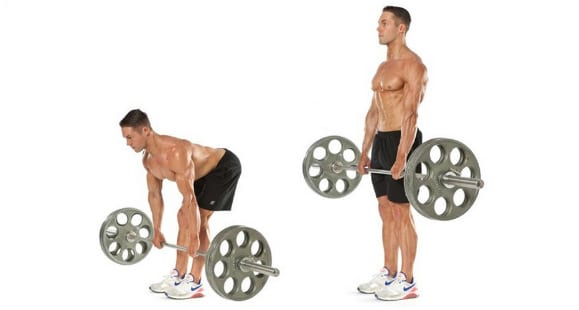
Variations:Try a Romanian Deadlift (straight legs);
A Sumo Deadlift (wide feet and close grip);A Smith Machine Deadlift (4).
Exercise #2: Pallof Press
Plane: Transverse
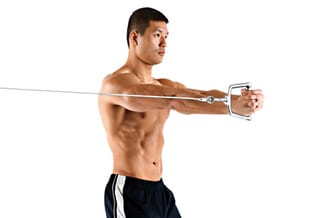
Movement: Anti rotation
Muscle action: Isometric
Example of muscles used: Erector spinae, Quadratus Lumborum (+ external obliques)
Similar to the deadlift, the Pallof Press is an example of an “anti-movement” exercise meaning its benefit comes from isometric (static) contraction of the spinal muscles.
In the way that the spinal extensors prevent flexion of the spine in a deadlift, the Pallof Press provides a rotational stimulus for the spine which your muscles work against to sustain a steady spinal position.
In this exercise the resistance of a cable machine (or resistance band) provides the rotational force which the spinal rotators withstand. This causes the erector spinae and quadratus lumborum on the opposite side to contract.
The Pallof Press is a component of not only performance development programmes for athletes, but also as a part of injury prevention plans (5). Particularly this is important for athletes who often utilise rotational movements (such as martial arts, boxing, baseball or discus throwing).
Starting position? As this is a one sided exercise you should position yourself side-on to a cable attachment at shoulder level, with the side to be trained furthest away from the attachment point.? Grasp the handle of the cable in both hands (use a stirrup handle if available).
Step-by-Stepa) Pull the handle into the centre of your chest and take a 1 meter step away from the attachment (remain side on).b) As you straighten your arms and take the handle away from the centre of your body, you will create a longer lever by which the cable can cause rotation at your spine. At the point when your arms are straight you should feel almost about to fall over and be pulled into the rack.c) Keep your torso tight to prevent the rotation and hold for 5 seconds. If at 5 seconds it feels easy still you need to up the weight.d) Take the pressure of the spine muscle by bringing the arms into your chest again. Perform both sides in sets of 15-20.
Exercise #3: Unilateral Farmer’s walks
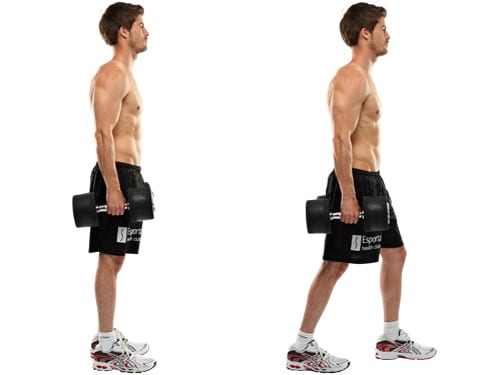
Plane: Frontal
Movement: Anti side flexion
Muscle action: Isometric
Example of muscles used: Latissimus dorsi (+ external obliques)
Also known as the suitcase lift, this exercise well known by Strongmen may be new to you!
This exercise involves taking a heavy weight in one hand and walking a short distance in a straight line. The weight provides a force to pull the spine into side flexion, which is counteracted by muscles in the trunk on the opposite side.
Studies have shown that this causes high muscular activity in the external obliques, rectus abdominus and importantly the latissimus dorsi muscle (6).
Working the “lats” in this way gives our spine support and strength to carry objects in one hand without folding into a heap.
Strongman exercises such as the Farmer’s walk also have the benefit of being different to traditional resistance training exercises, which helps improve motivation and adds training variety to induce greater muscular adaptation (7).
Starting position? Stand beside a dumbbell, kettlebell or barbell.? Perform a squat to descend and grasp the weight with one hand.? Brace your abdominals and back to prepare for the lateral pull of the weight as you stand.
Step-by-stepa) Perform a single arm deadlift to rise to a straight position.b) Keep your spine straight as you take large steps forward in a straight line. NB: If the steps have to be short to prevent you falling over then the weight is likely too heavy.c) Perform 10-15 steps before slowly descending to lower the weight.d) Turn around and perform the same on the opposite side.
VariationsGo heavy with a dumbbell and try single arm deadlift (without the walking). This way you can work on muscular strength rather than strength-endurance.
Exercise #4: Lat Pulldown
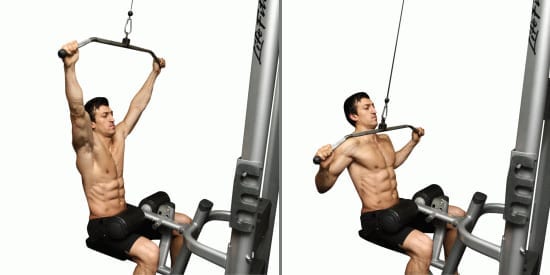
Plane: Frontal
Movement: Shoulder adduction (from elevation), scapula depression and retraction
Muscle action: Concentric
Example of muscles used: Latissimus dorsi, erector spinae
It is a close toss up between the lat pulldown machine and the wide grip chin up for the greater width builder for the back.
Both the lat pulldown machine and chin up exercises are effective in activating large degrees of muscle tissue in the latissimus dorsi (8). However, it is also apparent that the lat pulldown machine allows a greater degree of muscular isolation in the lats.
This is largely due to the reduction in load which can be used with the machine. Full body weight chin ups have a specific load which may be too much for just the isolated lat muscles to overcome. As such a more functional, multi muscle movement is required to perform the exercise (biceps, rectus abdominus, triceps all have a greater role) (8).
A sub-bodyweight load can extend the time under tension, increase the duration of a set and allow a greater stretch of latissimus dorsi fibres, which all help to optimise metabolic demands on the muscle tissue. Isolation of the latissimus dorsi is also facilitated by the secure position of the legs when seated at the machine.
Starting position? Stretch up to grip the bar with a wide grip, palms should be facing away from you towards the weight stack (pronated).? Sit under the bar, tightly securing your legs to prevent sway and elevation of the body allowing momentum to assist the exercise.
Step by Stepa) Brace your abdominals and start the pull down movement by pulling the elbows down in a straight line - the movement continues by pulling the elbows in towards your sides.b) Try to optimise the mind muscle connection by focusing on the elbow movement. If you focus on your hands, some of the contraction can be lost as you extend your elbows.c) Slowly let the cable pull your elbows away and up towards the ceiling.d) Stop the bar just before the stack lands and repeat the motion.
Variations- Modify hand position along the bar (wider or closer)- The grip type (e.g. supinated so your hands face you); or you can change the attachment from a long bar to a different type (parallel-wide bar for example).
Whilst the variation may hit different fibres and areas of the lats, the overall amount of EMG activity is likely to be the same (9).Exercise #5: Roman Chair Back Exercises
Plane: Sagittal (thoracic and lumbar spine)
Movement: Extension (thoracic and lumbar spine), retraction and depression (scapula)
Muscle action: Concentric
Example of muscles used: Latissimus dorsi, rhomboids, medial trapezius
If you want to grow, you’ve got to row!
A thick, muscled back is borne from rowing in what ever form you can manage. There are a number of variations of rowing from which you can make muscular gains, however in my experience a plate-loaded or weight stack seated row is one of the best!
In all truth, if optimal muscle activation symmetrically across the largest expanse of the back is your goal, then the bent over row with a barbell is the absolute winner (10).
Alternately if you want to build an element of width into your programme (away from using a lat pulldown machine) then you could consider an inverted row using a TRX suspension system or the bar of a Smith machine, as this variation hits a greater portion of your latissimus dorsi and upper back (10).
The trick is to NOT actively pull your shoulder blades back in preparation to performing the row as this shows no greater benefit for the thoracic muscles!
The continued benefit of the seated row is that sets and reps can be modified to really optimise metabolic demands and tissue stress on the key areas of the back- hence facilitating greater muscle adaptations. Extend sets up to 25-30 repetitions or increase time under tension to boost the benefits of this exercise.
Starting position? Sit at a seated row machine with feet flat and chest firmly stable against the chest rest. This minimise lower lumbar load and isolates the focus on the lats and the rhomboids.? Grasp the handles of the machine with which ever grip you prefer (pronated, supinated, wide, close, parallel, etc.)? The chest plate should be situated at a point where your arms are extended to reach the handles and your shoulder blades are pulled into protraction.
Step-by-Stepa) Start a smooth pull of the handles towards your torso- without a pre-emptive shoulder blade retraction.b) At the end of the pull pause for 1-2 seconds and firmly pinch your shoulder blades together.c) Relax this contraction and slowly let the handles pull your hands away from your torso.d) Stop just prior to the weight stack landing and repeat the motion.
VariationsTry different hand and grip positions to keep this exercise interesting, or try an Iso-lateral machine to use each arm separately.
Alternately, rowing exercises with free weights are a different option. Whilst these hit a greater amount of your lumbar spine muscles (erector spinae, quadratus lumborum), this can be minimised by varying from barbell to dumbbells.Exercise #6: Machine Rows
Plane: Sagittal

Movement: Extension (lumbar spine)
Muscle action: Concentric
Example of muscles used: Erector spinae, quadratus lumborum, latissimus dorsi
A lot of research has been conducted on examining lower back extension exercises for therapeutic (rehabilitation) purposes. An oft neglected area of back training, when people do try to incorporate the lumbar spine into a training programme it is normally just included with just deadlifting.
The normal variations on lumbar spine extension exercises (e.g. prone supermans, bird-dog poses) are usually just not effective enough in non-injured gym goers in providing enough stimulus for muscle adaptation.
However, research does indicate that isolated trunk extension exercises can assist recruitment of the spinal extensors whether statically or dynamically contracted (12).
Deadlifting, as suggested previously, is a static contraction and an element of any good back training plan.
The best variation of dynamic lumbar extension loading, in my opinion, is the Roman Chair back extension, which provides significant activation of the erector spinae, the paraspinal muscle groups and the quadratus lumborum (13).
Starting position? Place your feet on the stand with the front of the thighs against the thigh pad. You should be able to flex forward at the hip to approximately 90° without feeling unstable.? Cross your arms at your chest and firmly tighten your core to ensure your back remains straight.
Step-by-Stepa) Bend forward at the hips and lower your chest towards the floor, during this phase keep the back straight.b) Straighten your body and elevate back to the starting position (still keeping the back straight).c) At the end of the motion squeeze your lower back muscles tight to perform a small degree of lumbar hyperextension. Hold for 1-2 seconds and then relax.d) Repeat for required number of repetitions, and add a weight plate or kettlebell in your arms for adding resistance.
Bonus Exercise #1: The Humble Squat!
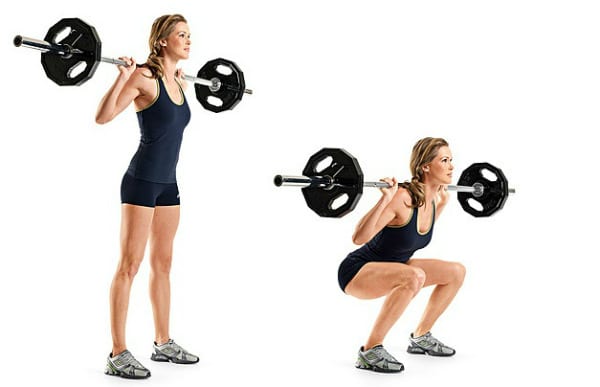
I know, I know… this is supposed to be back day- not leg day right?!
Well I am here telling you that squat variations can be the added cherry on your back day workout cake.
The truth of the matter is that squats with an external load greater than 50% 1RM (kettlebell, barbell or dumbbell) provides greater trunk muscle activation than other back stabilising “Pilates-type” gym ball exercises (14); and greater than that found in a weighted sled pull (15).
In truth, even if you replace the external load of a free weight squat with resistance bands, the EMG recruitment in the erector spinae muscles is unchanged (16). EMG activity of the erector spinae is also increased in situations when the bar load is less stable (17).
? I would NOT advise putting more weight on one end of the bar than the other (again, please don’t- this is an injury waiting to happen!)
Step-by-Stepa) Stand beneath a securely fixed Olympic barbell in a squat rack (ensure all safety mechanisms are in place (e.g. bar collars on, safety bars at the correct heights).b) With the weight across the meaty part of your trapezius muscles elevate the weight in a straight line to lift off the rack. Take a backwards step to clear room to descend and stand with feet approximately hip-shoulder width apart.c) Control the descent of the bar by bending your hips and poking your backside out. Keep your back straight and head and chest elevated (imagine you are wearing a necklace that has to always be on display!)d) When you just past the point when your thighs are parallel to the floor, stop and push upwards to ascend back to the standing position.
Bonus Exercise #2: Strongman training
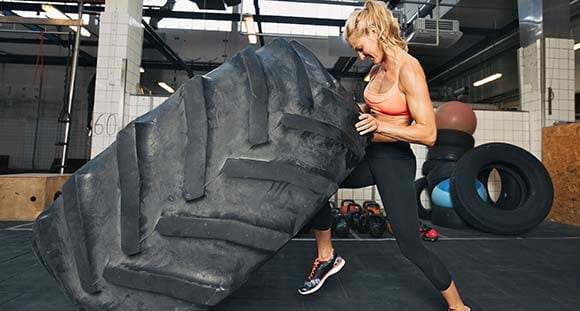
So whilst this is not technically one specific exercise I felt it needed inclusion!
We can learn from these monsters! The use of various weighted implements in a controlled environment, and relative to the capacities of the individual, can really stoke the fires of even the best back workouts!
They add diversity and interest to keep people feeling motivated and challenged by their exercise sessions, whilst also showing significant degrees of spinal load and muscle activity recruitment (6).
Whether it be a tire flip, a Yoke Carry or an Atlas ball lift- all will hit different muscles at different angles than the standard gym lifts.
Tyre Alternative: Try getting a 30kg dumbbell up onto your shoulder and carrying it across the gym or perform overhead squats with a heavy sandbag.
Take Home Message
Big, broad backs are made by varying the different aspects of training.
? You need to mix up static contractions AND dynamic contractions.
? You need to add rows AND lifts.
? You need to combine single side AND two sided movements.
? You need to be as focused on the muscles you cannot see, as the ones that you always see.
? You need to modify your exercises to build the mind-muscle connection to isolate each muscle area and boost the metabolic demands of the exercise.
And if in doubt, chuck in some squats on back day!
Whey ProteinLean muscle
CreatineStrength, Power
BCAA'sMuscle recovery


